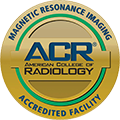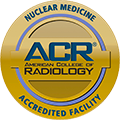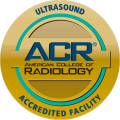The 3 Tesla (3T) Prostate MRI has emerged as one of the most advanced and reliable tools in modern prostate imaging, offering patients and physicians a clearer, more accurate view of prostate health than ever before. For men facing elevated PSA levels, a family history of prostate cancer, or other concerning symptoms, this technology can be a game-changer—providing peace of mind, guiding treatment decisions, and often sparing them from unnecessary procedures.
At its core, the 3T MRI uses a magnetic field that is twice as strong as the standard 1.5 Tesla MRI machines. This increased strength allows it to produce highly detailed images of the prostate and surrounding tissues. In layman’s terms, it’s like upgrading from a blurry photograph to a crystal-clear high-definition image. This clarity is especially important when trying to detect small or hard-to-spot tumors, which might otherwise go unnoticed with less powerful imaging.
One of the most significant benefits of the 3T MRI is its ability to distinguish between aggressive cancers that need immediate treatment and slow-growing ones that can be safely monitored. This means fewer men are subjected to unnecessary biopsies or treatments that may not be needed. In fact, many patients who undergo a 3T MRI are able to avoid a biopsy altogether if the scan shows no suspicious areas. And for those who do need a biopsy, the MRI can guide the procedure with pinpoint accuracy, targeting only the areas of concern rather than randomly sampling the prostate.
The procedure itself is straightforward and non-invasive. After changing into a hospital gown and removing any metal objects, the patient lies on a table that slides into the MRI machine. The scan typically takes between 10 to 20 minutes. During this time, the machine may make loud tapping or humming noises, but patients are given earplugs or headphones to stay comfortable. In some cases, a contrast dye is injected into a vein to help highlight blood flow and detect abnormal tissue activity. The entire experience is painless, and there’s no radiation involved, unlike with CT scans or X-rays.
Once the scan is complete, a radiologist reviews the images and generates a report. This report identifies any suspicious lesions, assesses their size and location, and often includes a score indicating how likely it is that the lesion represents clinically significant cancer. The results are then shared with the patient’s urologist, who uses the information to decide on next steps—whether that’s monitoring, further testing, or beginning treatment.
For many men, the outcome of a 3T MRI brings clarity and relief. If no cancer is found, they can rest easier knowing they’ve avoided an invasive biopsy. If cancer is detected, the detailed imaging helps ensure that treatment is tailored to the specific nature and location of the tumor. And in cases where the cancer is low-risk, the scan supports a more conservative approach, allowing patients to avoid the side effects of aggressive treatment while still keeping a close watch on their health.
In summary, the 3 Tesla Prostate MRI represents a leap forward in prostate care. It combines cutting-edge technology with patient-centered benefits: greater accuracy, less discomfort, and more informed decision-making. For men navigating the uncertainty of prostate health, it offers not just better images—but a clearer path forward.










